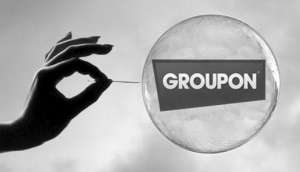One short year ago, the hype around daily deals was electric. In the analyst community, you could barely get through a day without hearing something about players like Groupon, which happened to be growing at a meteoric pace. In fact, by the time of its initial public offering in 2011, Groupon was stating that it had reached full year 2010 revenue of $713.4 million, while only a year earlier, the company’s revenue was $30.47 million – a year over year growth rate of 2,241%. You read that correctly…over two thousand percent growth in one year!
There was also significant debate about whether these deal sites were salvation or suicide for small business, who for years had battled large retailers with deeper pockets. Many felt daily deals could be the playing field leveller, that allowed the little guy to achieve marketing reach on a budget.
However, while consumers appeared to be prepared to jump on deals, many wondered what the actual redemption rates on deals were at retail. More importantly, statistics began to show that deals as a long-term customer acquisition tool were weak, with many consumers admitting to cherry picking deals and never returning to the store again. There were even a few horror stories of merchants being driven out of business by deals that went viral and exceeded all capacity to fulfill demand.
My take at the time was regarded as somewhat contrarian. I felt that “deals” were not and never would become, a self-sustaining business but rather that, deals, discounts and promotions were and always had been mere marketing tactics. I felt that players like Groupon and Living Social, to name just a couple, had not invented a new business model but simply digitized an old tactic – the price cut – that had existed since the beginning of time.
If there was anything impressive about deal sites, it was perhaps the massive uptake they could achieve with their offers. When Gap ran a $50.00 gift card offer for $25.00, they sold half a million of them. It was like the difference between putting coupons on car windshield and dropping them from an airplane. But the degree to which an offer like this actually paid off for the GAP is still unknown. Groupons were notoriously difficult to measure at point of sale. Some argue that the offer did further damage to the already waning GAP brand.
As consumers, we tend to be wowed by digitization. Digitizing things tends to make old things look new and cool again but the shine wears off fast. If there’s nothing fundamentally new or game-changing about the concept, we lose interest quickly and move on. And it would appear that many of us have gotten over daily deals. Because underneath the shiny exterior, these were just coupons and does the world really need another coupon?
Last week Techcrunch reported that in the last half of 2011 alone, an unbelievable 798 daily deal sites folded. By the end of 2011, Groupon’s share price had slipped below its IPO level, as the company was plagued with accounting scandals and reported retailer acquisition troubles. Some even began referring to Groupon as nothing more than a thinly veiled “ponzi scheme.”
What lies ahead for daily deal sites is unknown. More may be born and almost certainly, more will die. A few might innovate and create real value propositions. My guess however is that eventually the surviving deal sites will simply be swallowed up into larger online entities. Every major player including Amazon, Google and Facebook will have a daily deal arrow in its quiver but they will be reduced to being nothing more than one of many marketing tactics available – not businesses unto themselves.
UPDATE: Following the posting of this article, I participated in a discussion with Natasha Mitchell, Host of the Australian Broadcasting Corporation’s Life Matters, on the future of daily deal sites.
Here’s the audio of that program.


